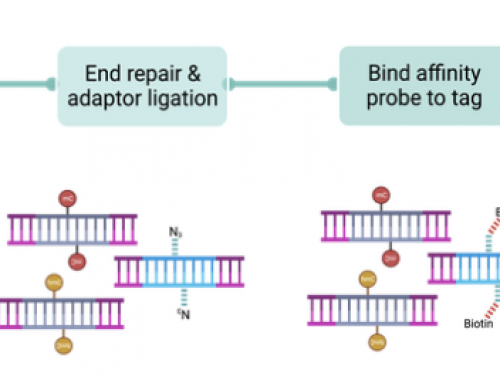Updates in […] following some feedback and comments!
MGI and Illumina are going head-to-head in a patent battle over the chemistry used to sequence genomes. The battle for sequencing supremacy was won many years ago by Illumina (although @nanopore,@MGI_BGI and a few others still in stealth mode hope to change that). Their market share in WGS, exomes and RNA-Seq is huge, and their purchase of PacBio will extend this to almost a monopoly. This dominance has led to a drop in the cost of sequencing a Human genome from well over $10,000 a decade ago to under $1000 today. However, the price has remained relatively stable since 2014 when the HiSeq X was introduced, and the $100 genome will be waiting in the wings until technical challenges are solved and there is enough customer demand.
MGI announced their latest updates at AGBT’19 (read coverage by Dale and GenomeWeb). This revealed the new “CoolNGS” chemistry on the T7 system, which uses nucleotides that are not fluorescently labeled and may enable them to get around the core SBS patents. Instead of covalently attaching a fluorescently moiety to each base MGI use base-specific-block antibodies. Each of these binds to the blocking chemistry (which stops more than one base bing incorporated in each SBS cycle) and is read similarly to the standard Illumina chemistry.

RT: CoolNGS New MGI Chemistry #AGBT19 pic.twitter.com/oz2f02qn0L
— Cindy Taylor Lawley (@taylorlawley) March 2, 2019
Patent wars:
Earlier this year Illumina launched litigation against MGI in both Germany and Denmark. These allege that MGI infringe two key patents: EP 3002289 B1 and EP 1530578 B1, both of which describe “MODIFIED NUCLEOTIDES FOR POLYNUCLEOTIDE SEQUENCING”. However, the Illumina patents seem pretty clearly to describe the use of nucleotides with a fluorescent molecule covalently linked to the base. Whilst, MGI’s “CoolNGS” links the base indirectly to the label, via the antibody.
MGI have hit back with their recent lawsuit, which alleges that Illumina infringe their US 9222132 patent. This describes “Methods and compositions for efficient base calling in sequencing reactions”, and clearly describes the use of a two-colour SBS workflow as used on the Illumina NextSeq and NovaSeq instruments. If this stands up in court then expect it to be used as a bargaining chip in negotiations between the two companies.
CoreGenomics blog: One of our bases is missing: where's the G in NextSeq chemistry: Illumina surprised pretty … http://t.co/l9qZ76XI8v
— James Hadfield (@coregenomics) February 2, 2014
Unfortunately, for those of us who were hoping to see the $100 genome before 2020, MGI’s announcements on the updated instruments and chemistry on T7 at AGBT’19 come with an $500 per WGS price-tag (MGI are currently approx $700). Coupled to the fact that most groups using NGS don’t quite have faith that MGI/BGI can deliver the same quality as Illumina today, this makes mass adoption unlikely.
“Nobody got fired for buying…”








Claim 1 of 578 looks pretty robust to me. MGI also use a block. the 578 patent has been challenged many times and still stands. You’ve also always got the Doctrine of Equivalents to wrestle with.
Do you really feel that Illumina’s dominance has contributed to cheaper sequencing? Goes against the logic of competitive markets.
I don’t think anyone could fail to notice how precipitously costs have dropped since Illumina bought Solexa and developed the technology to the point we’re at today. So in that case I think they have made sequencing not just cheaper but easier and faster.
That being said Illumina are hugely dominant and the company is a different one from the one I started working with back in the early 2000’s, and even from the company circa 2012. Whether this has contributed to the stalling of costs is less clear (I will now write a quick post about NHGRI costs so add comments to that).